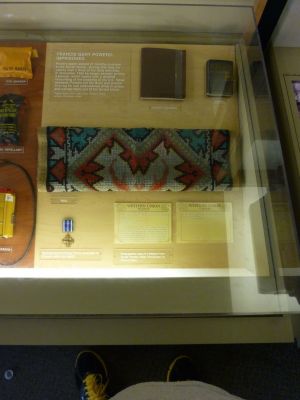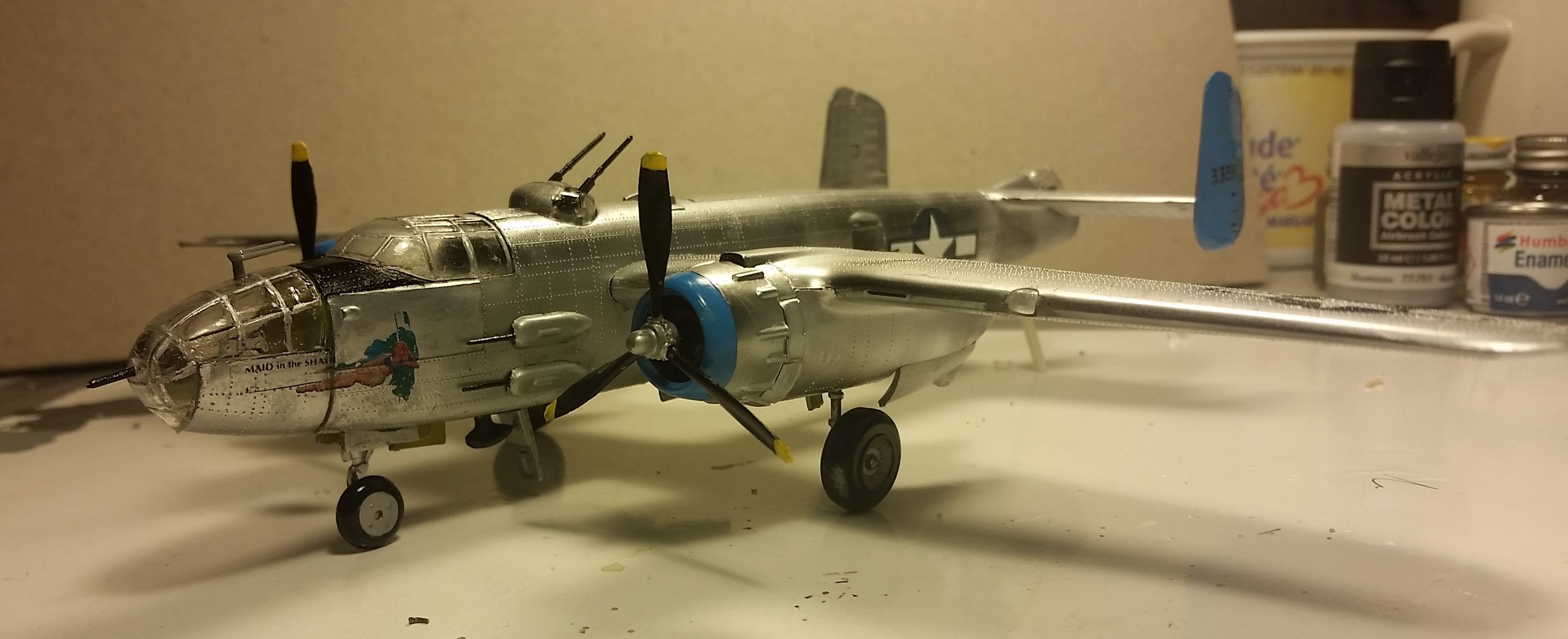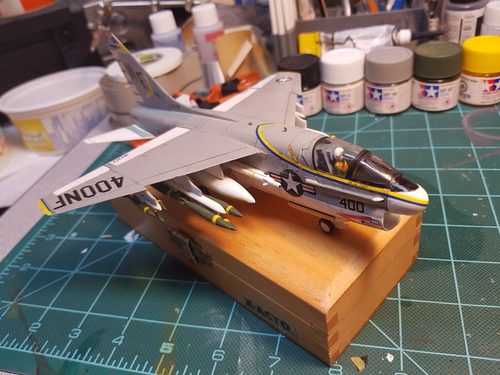The U-2 Incident, 55 Years Later

Click on the image for a larger version.
Today marks the 55th anniversary of the Francis Gary Powers U-2 Incident. In the late 50’s, the United States was desperate for information about the Soviet military capabilities, especially their bomber force and nuclear missile sites. Lockheed submitted a proposal developed by legendary aeronautical engineer Kelly Johnson based on his high performance F-104 Starfighter interceptor, but it was rejected by the Air Force. The CIA, however, got wind of this and they contracted Lockheed to develop the high altitude reconnaissance aircraft that could overfly Russia and bring back photographic details of these installations. Johnson and his secret “Skunk Works” lab finished the U-2 prototype after only 8 months. During this period, the CIA even sent personal cheques to Johnson’s home in amounts totalling millions to keep the project funded while they worked through the red tape in Washington. To meet the required altitude requirements, Kelly drove his team to make the aircraft lighter and lighter, resulting in an airframe that met the requirements, but was quite flimsy. On one occasion, a worker dropped a wrench and it tore a hole in the thin metal fuselage.
The CIA commenced overflights of Russia and gained valuable intelligence. The planes were unmarked and flew with civilian pilots, some of whom were not even U.S. citizens. President Dwight Eisenhower personally authorized the flights and in the spring of 1960, he was getting more nervous about having a U-2 shot down over the Soviet Union. Despite his concerns, he authorized a mission to take place in late April that, due to weather considerations, was postponed until May 1st — May Day in the Soviet Union. The pilot for that fateful mission would be Francis Gary Powers, a Captain in the Air Force, but technically retired and operating as a civilian. He would overfly the Baikonur Cosmodrome, plutonium generating facilities, and other important installations after taking off from Peshawar, Pakistan with the intention of landing at Bodø, Norway.
Flying at 70,000ft, the U-2 was virtually immune to Soviet air defenses. The aircraft were tracked on radar even before they entered Soviet airspace, but there was nothing the frustrated Russians could do about it. Their interceptors would flame out long before they could get close to the U-2’s altitude and their surface-to-air missiles were not accurate enough to hit anything flying that high. Unfortunately for the U.S. and Powers, their luck had run out. The new SA-2 anti-aircraft missile was unleashed on Power’s U-2 and exploded near the high-flying plane. The concussion blast blew the wings off the U-2 and basically caused it to split in two. Powers was unable to hit the self-destruct button and barely escaped the plummeting wreckage. He bailed out and landed in a farmer’s field where he was immediately taken into custody.
Naturally, the backlash was enormous and the Soviet Premier Nikita Khrushchev played it up for all it was worth, letting Eisenhower dig himself a huge hole with his “off-course NASA plane” cover story. Powers was paraded in front of the cameras, as was the U-2 wreckage. Powers was sentenced to ten years imprisonment, but was returned home in a “spy exchange” in 1962 for Rudolph Abel. Some in the CIA suggested it was like trading “Mickey Mantle for a goddamn bullpen catcher.” This was only the beginning of a cold reception for Powers. Many criticized him for not making sure the U-2 self-destruct was activated and some went so far as to suggest he should have utilized the fatal poison needle device issued to all U-2 pilots to avoid telling the Soviets anything valuable. Eventually, a commission cleared Powers and commended him on his conduct under these difficult circumstances. He went on to work for Lockheed for several years as a test pilot, then flew a traffic helicopter for a Los Angeles news station. He died when his helicopter’s faulty fuel gauge caused him to run out of gas and crash. A hero to the end, the analysis of the crash revealed he potentially could have landed safely, but changed his course to avoid children he saw playing near his landing area.
The U-2 continues to fly today, used for high-altitude experiments as well as its original reconnaissance role. It is one of very few aircraft to be in service for over 50 years.
There are many artifacts relating to the Francis Gary Powers incident at the Smithsonian Air and Space Museum in Washington, DC.
Below is the U-2C on display at the National Air and Space Museum, Washington, DC. This is not exactly like the plane used in 1960 in that it is actually a modified U-2A upgraded to a U-2C. You can get a good view of the huge glider-like wings that gave the U-2 lift even at 70,000ft.
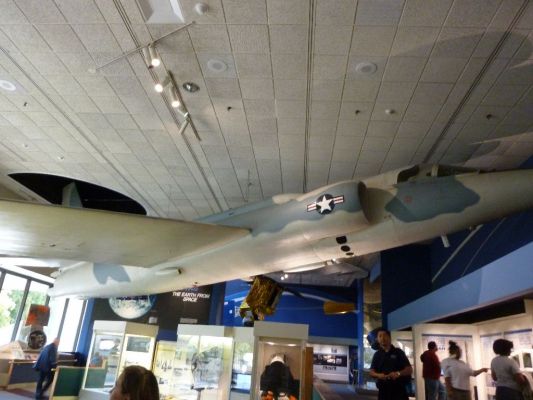
Here is the camera used in the U-2 to photograph Soviet installations, designed by Edwin Land. These photos showed the CIA that the Soviets did not have nearly as many ICBM’s or strategic bombers as originally thought. This valuable intelligence was key in keeping the Cold War cold. A few years later, a U-2 flight would reveal Soviet missiles in Cuba and set off the Cuban Missile Crisis.

U-2 Pilot survival kit, National Air and Space Museum, Washington, DC.
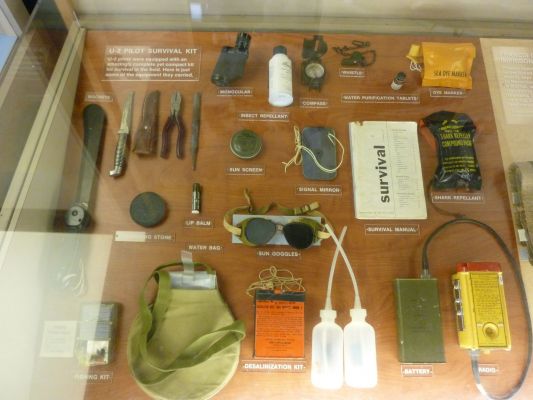
U-2 Pilot mannequin demonstrating how the pilot lined up the camera, National Air and Space Museum, Washington, DC.
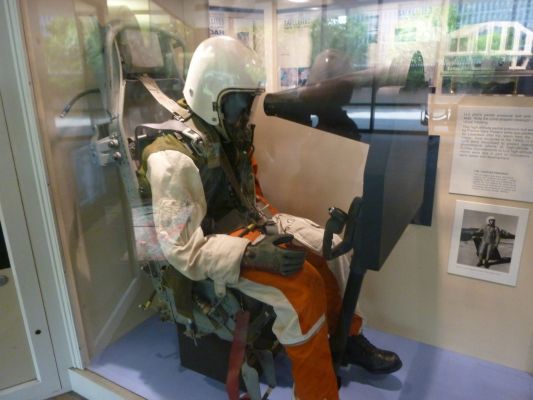
Francis Gary Powers artifacts from his imprisonment, including a rug he made and used to hide his diary, National Air and Space Museum, Washington, DC. Click on the image for a larger version.
